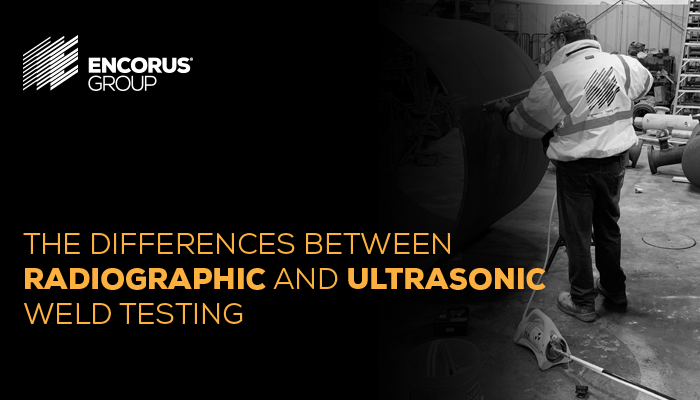Welds can be tested using three different methods: destructive, in which the weld is destroyed to examine the physical properties of the metal and components; mechanical, which is used to determine the properties of metal under force; and non-destructive, in which the integrity of the weld can be determined without destroying the weld itself. The primary advantage of non-destructive examinations (NDE) is the ability to examine a component’s surface, sub-surface, and internal makeup for defects while keeping the weld intact. Its two most common types are radiographic testing and ultrasonic testing.
Radiographic Weld Testing
Also known as x-ray inspection, radiographic testing involves the use of commercial x-ray or gamma units to examine visible discontinuities on the interior of the weld, including:
– Cracks
– Scattered porosity
– Blowholes
– Inclusions
– Undercutting
The process is similar to that used to take x-rays of the human body. Gamma rays are passed through a tube onto photographic film to produce an image of internal components. As in the medical field, special expertise is required to perform radiographic weld testing and interpret the results. Due to its requirement for specific equipment, highly qualified personnel, and extensive safety precautions, its cost tends to run higher than other types of testing. However, radiographic testing is acknowledged as one of the most versatile and widely accepted forms of NDE, as it’s required to meet the welding codes and standards established by many relevant organizations, such as the American Welding Society (AWS) and the American Society of Mechanical Engineers (ASME).
Ultrasonic Weld Testing
Used to check for surface and sub-surface discontinuities, ultrasonic weld testing involves the direction of a high-frequency energy beam through the object. If the beam detects an interruption, the sound will reflect back and be collected by the pulse-echo equipment, which then amplifies it and displays it visually in video format. Ultrasonic testing is very sensitive and can determine the exact location of discontinuities, particularly gas pores, lamination, and other defects that are too small to be observed with other methods. While it requires interfacing with computers or equipment with built-in memory to produce a permanent record, it allows for a closer inspection of joints than radiographic testing can provide. Like radiographic testing, only highly trained professionals can perform ultrasonic weld testing.
While radiographic and ultrasonic testing each offer their own advantages and disadvantages, both forms of non-destructive examinations are indispensable to the welding industry. At Encorus Group, we offer these and other NDE options, all of which meet or exceed requirements and are performed by our experienced technicians using advanced equipment. For more information, contact Director of Testing Services Jim Handzlik at 716.592.3980, ext. 148.


